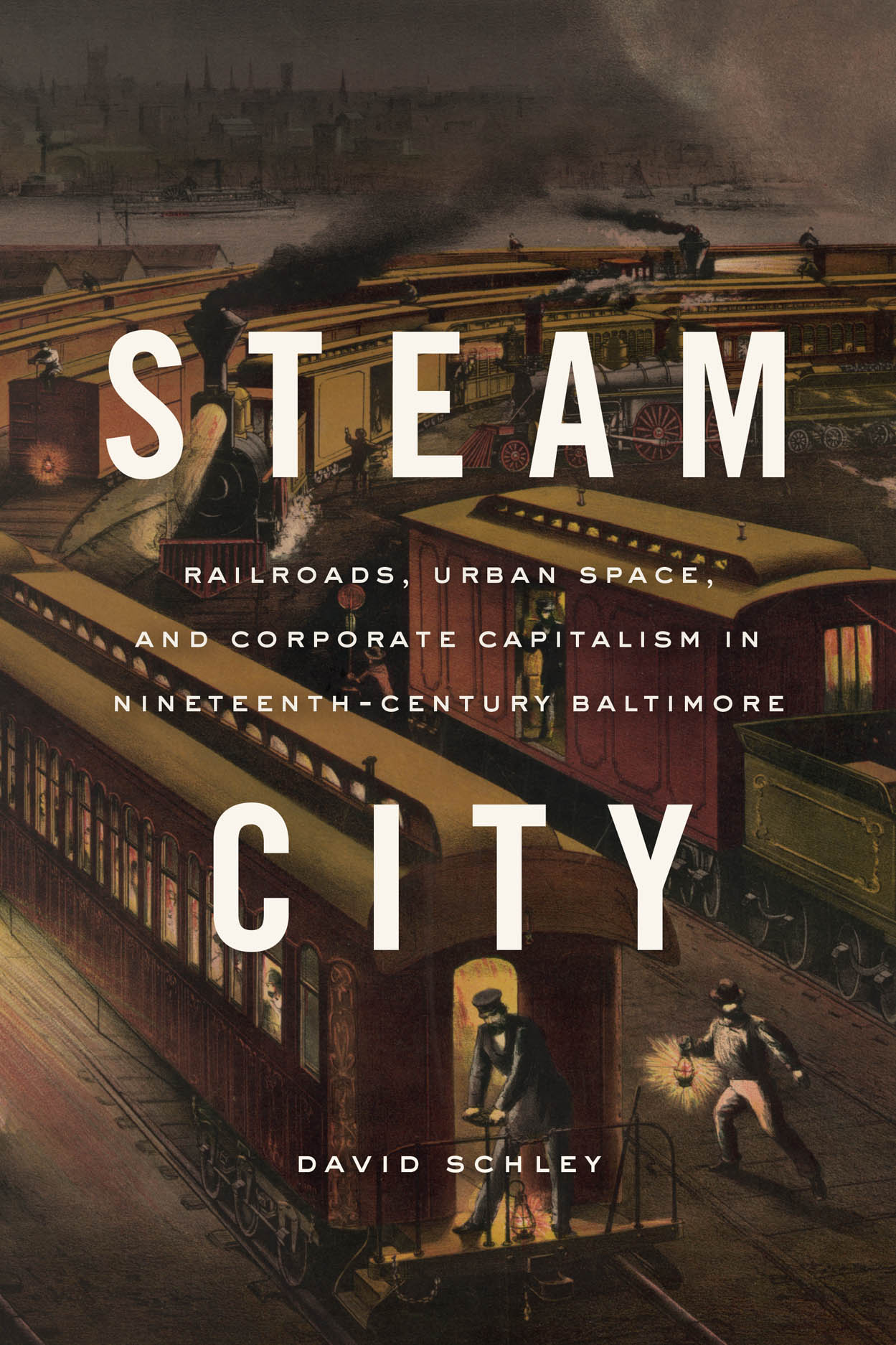The B&O can fairly claim to be America’s first true railroad. Its industrial predecessors, short lines often powered by gravity, were designed to carry coal, pig iron, granite, or gunpowder. Powered by Peter Cooper’s steam engines, the B&O became the first to schedule the movement of passengers and freight across state lines. The goal, which took 25 years to realize, was to traverse the 300 miles from Baltimore to the Ohio River, which in turn flowed into the Mississippi, Missouri, and Arkansas rivers, the great “western waters” which served as shipping lanes for the heartland. Baltimore merchants believed that their city’s position as the westernmost port on the Eastern seaboard would enable them to monopolize the movement of agricultural produce from the Midwest to ports on the Atlantic and the Caribbean. But with the construction of the supremely successful Erie Canal, Baltimore lost that advantage to New York City. Baltimore now turned to a new technology, railroads—operable in winter and faster than canal boats—to regain the advantage.
The scale of the enterprise captured the attention of a nation. An Alabama newspaper predicted that the new railroad would make Baltimore “the greatest commercial city in the United States.” A Massachusetts paper declared, “a single city has set on foot an enterprise…worthy of an empire.” The enterprise was impressive not just as an audacious effort to use locomotive power to dominate a massive region, but also because the B&O represented a new order of economic organization. Railroads, as Alfred Chandler pointed out, were “pioneers in the management of modern business enterprise.” And the B&O was the pioneer among pioneers.
While much has been written about the B&O, including at least three book-length histories, David Schley’s Steam City proves that there was more ground to cover. His story not only shows how the B&O became the model of a modern corporation, but also how, in the process, it evolved into an aggressive predator, so dividend-obsessed that it ultimately failed.
At its start, Schley observes, the railroad was a public enterprise intended to stimulate the city’s economy, not to generate profits of its own. Half of its founding capital came from the governments of Baltimore and Maryland and the rest from enthusiastic residents of the city who so over-subscribed the offering that shares had to be broken into fractions. While these local shareholders were undoubtedly hopeful that their investment would yield profits, they also expected that the successful railroad would contribute to Baltimore’s general prosperity. The B&O was an economic extension of the urban political system—a private corporation that belonged to the public.
